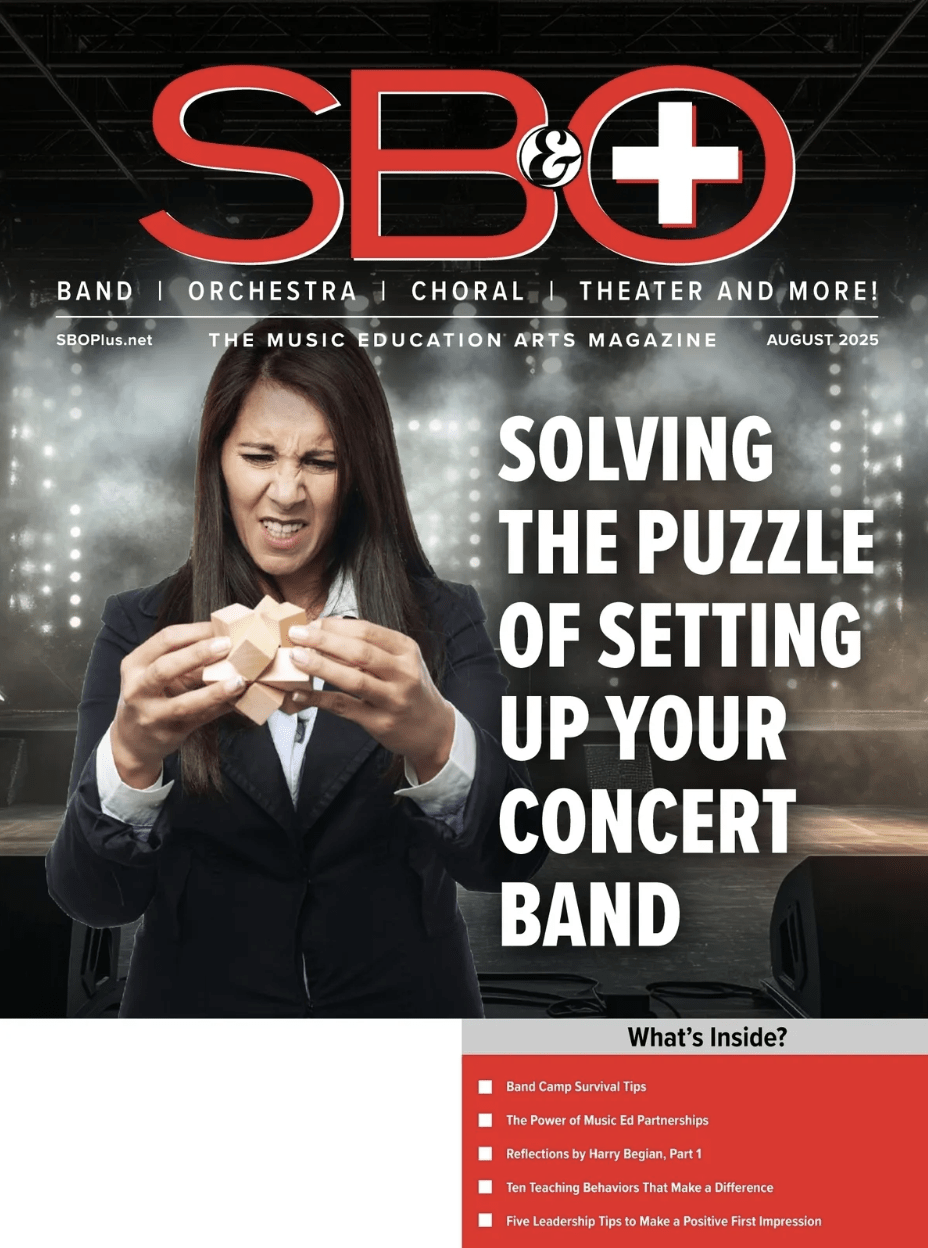Many people, including some teachers I have met, assume percussionists just hit or strike a drum or mallet instrument. This assumption cannot be farther from the truth.
Educating your students in the different types of strokes in different situations as well as different instruments is key to making them a percussionist participating in an art form, rather than just another drummer. There are too many varying types of strokes to mention in one article, but I will address several different types that your students can use in different situations.
Full Stroke: This is also referred to as a natural, rebound, or legato stroke. Start the stroke from any height (usually high), play, and return to the same position. Avoid jabbing with the forearm or pulling the stick back with your wrist. Let the stick rebound naturally. This can be used in ballads and legato situations where the music is lush and expressive, such as a soft orchestral movement.
Tap Stroke: This is also a low, unaccented and soft stroke. Start the stroke from a low (close to the drumhead) position, play, and return to the same low position. It is an exclusively low version of the full stroke. This is used in the same situation as the legato stroke (concert hall) but for very soft dynamics in a ballad situation.
Down Stroke: This is also known as a controlled or staccato stroke. Start the stroke high, play, and stop the stick close to the drumhead. These strokes are used in faster and more aggressive styles of music.
Up Stroke: This is also known as a lift or tap lift stroke. Start the stroke low, play, and end by lifting the tip to a high position. This is used when pulling the sound out of percussion instruments that are not drums, such as wood blocks, cowbell, concert bass drum, or temple blocks.
Double Stroke: These are also known as roll strokes, drags, open rolls, or diddles. Start the stroke from any height, play the first stroke and allow the stick to rebound. Play the second stroke, while increasing velocity to make both notes sound even and then return to the original height of the first stroke. At extremely fast speeds or soft dynamics, play a controlled bounce of two notes. These are often used in marching percussion situations.
Triple Stroke: These are also call French Rolls. At a slower speed, start the stroke from any height, play the first stroke and allow the stick to rebound (usually to a slightly lower height than the first), allow the second stroke to be played from the energy (bounce) provided by the first stroke, play the third stroke (if needed, increase the velocity of the third stroke to make it sound even) and return to the original height of the first stroke. At a faster speed, play a controlled bounce of three notes, and the stick is lifted up after the third note. These are also used in marching percussion situations.
Multiple Bounce Stroke: Start at any height and allow the stroke to bounce as long as possible. Notice the amount of finger pressure allowed for each length. Avoid the temptation to remove the third finger from the stick. This type of roll is used only in a concert snare drum or orchestral situation.
Different Stick Heights: There are also strokes of different heights for different dynamic levels. Stick heights of one inch are for very soft passages. The student should use their fingers to maintain control of this stroke height. There are also three inch, six inch, and nine inch stick heights involving wrist movement. A twelve-inch stick height is for extremely loud and aggressive passages.
Drum Verses Marimba Strokes: Many students make the mistake of approaching a drum and a keyboard instrument the same way. A completely different stroke is required for keyboard instruments. It is called the “piston” stroke, where every stroke draws the sound out of the instrument by a natural rebound or “uplift.”
I often use the analogy of bouncing a basketball to my students. The student should not “force” the ball up, but instead allow the “ball” or “mallet” to naturally rebound upward.
In 2016, The Huffington Post called Kevin Lucas “the most talented percussionist since Lionel Hampton, Ginger Baker, and Tito Puente.” He has been nominated for 38 music industry awards for his Echoes in the Sand album, and he won the 2016 American Songwriting Awards. Kevin performed with the Madison Scouts Drum and Bugle Corps from 1992-1994, and won the DCI Midwest Individuals in 1994 for keyboard percussion. He placed second in the United States for concert hall percussion at the Music Teachers National Association collegiate competition in 1997.


























